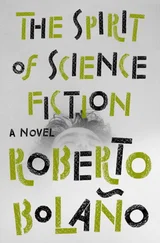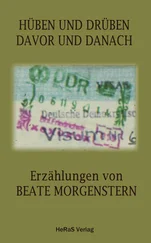Ben Goldacre - Bad Science
Здесь есть возможность читать онлайн «Ben Goldacre - Bad Science» — ознакомительный отрывок электронной книги совершенно бесплатно, а после прочтения отрывка купить полную версию. В некоторых случаях можно слушать аудио, скачать через торрент в формате fb2 и присутствует краткое содержание. Жанр: Публицистика, на английском языке. Описание произведения, (предисловие) а так же отзывы посетителей доступны на портале библиотеки ЛибКат.
- Название:Bad Science
- Автор:
- Жанр:
- Год:неизвестен
- ISBN:нет данных
- Рейтинг книги:5 / 5. Голосов: 1
-
Избранное:Добавить в избранное
- Отзывы:
-
Ваша оценка:
- 100
- 1
- 2
- 3
- 4
- 5
Bad Science: краткое содержание, описание и аннотация
Предлагаем к чтению аннотацию, описание, краткое содержание или предисловие (зависит от того, что написал сам автор книги «Bad Science»). Если вы не нашли необходимую информацию о книге — напишите в комментариях, мы постараемся отыскать её.
Bad Science — читать онлайн ознакомительный отрывок
Ниже представлен текст книги, разбитый по страницам. Система сохранения места последней прочитанной страницы, позволяет с удобством читать онлайн бесплатно книгу «Bad Science», без необходимости каждый раз заново искать на чём Вы остановились. Поставьте закладку, и сможете в любой момент перейти на страницу, на которой закончили чтение.
Интервал:
Закладка:
Could anything else explain the apparent connection between MMR, bowel problems and autism in these eight children? Firstly, although they sound like rare things to come together, this was a specialist centre in a teaching hospital, and the children had only been referred there because they had bowel problems and behavioural problems (the circumstances of these referrals are currently being examined by the GMC, as we will see).
Out of an entire nation of millions of inhabitants, if some children with a combination of fairly common things (vaccination, autism, bowel problems) all come together in one place which is already acting as beacon for such a combination , as this clinic was, we should not naturally be impressed. You will remember from the discussion of the unfortunate Dutch nurse Lucia de Berk (and indeed from reading news reports about lottery winners) that unlikely combinations of events will always happen, somewhere, to some people, entirely by chance. Drawing a target around them after the fact tells us nothing at all.
All stories about treatment and risk will start with modest clinical hunches like these anecdotes; but hunches, with nothing to back them up, are not generally newsworthy. At the publication of this paper, a press conference was held at the Royal Free Hospital, and to the visible surprise of many other clinicians and academics present, Andrew Wakefield announced that he thought it would be prudent to use single vaccines instead of the MMR triple vaccine. Nobody should have been surprised: a video news release had already been issued by the hospital, in which Wakefield made the same call.
We are all entitled to our clinical hunches, as individuals, but there was nothing in either this study of twelve children, or any other published research, to suggest that giving single vaccines would be safer. As it happens, there are good grounds for believing that giving vaccines separately might be more harmful: they need six visits to the GP, and six unpleasant jabs, which makes four more appointments to miss. Maybe you’re ill, maybe you’re on holiday, maybe you move house, maybe you lose track of which ones you’ve had, maybe you can’t see the point of rubella for boys, or mumps for girls, or maybe you’re a working single mum with two kids and no time.
Also, of course, the children spend much more time vulnerable to infection, especially if you wait a year between jabs, as Wakefield has recommended, out of the blue. Ironically, although most of the causes of autism remain unclear, one of the few well-characterised single causes is rubella infection itself, while the child is in the womb.
The story behind the paper
Some fairly worrying questions have been raised since then. We won’t cover them in detail, because I don’t find ad hominem stories very interesting to write about, and because I don’t want that aspect of the story – rather than the research evidence – to be the reason why you come to your own conclusion about the risks of MMR and autism. There are things which came out in 2004, however, which cannot fairly be ignored, including allegations of multiple conflicts of interest, undeclared sources of bias in the recruitment of subjects for the paper, undisclosed negative findings, and problems with the ethical clearance for the tests. These were largely uncovered by a tenacious investigative journalist from the Sunday Times called Brian Deer, and they now form part of the allegations being investigated by the GMC.
For example, it is investigating whether Wakefield failed to disclose to the editor of the Lancet his involvement in a patent relating to a new vaccine; more worrying are the concerns about where the twelve children in the 1998 Royal Free study came from. While in the paper it is stated that they were sequential referrals to a clinic, in fact Wakefield was already being paid £50,000 of legal aid money by a firm of solicitors to investigate children whose parents were preparing a case against MMR, and the GMC is further investigating where the patients in the study came from, because it seems that many of Wakefield’s referrals had come to him specifically as someone who could show a link between MMR and autism, whether formally or informally, and was working on a legal case. This is the beacon problem once more, and under these circumstances, the fact that only eight of the twelve children’s parents or physicians believed the problems were caused by MMR would be unimpressive, if anything.
Of the twelve children in the paper, eleven sued drug companies (the one that didn’t was American), and ten of them already had legal aid to sue over MMR before the 1998 paper was published. Wakefield himself eventually received £ 435,643 plus expenses from the legal aid fund for his role in the case against MMR.
Various intrusive clinical investigations – such as lumbar punctures and colonoscopies – were carried out on the children, and these required ethics committee clearance. The Ethics Committee had been assured that they were all clinically indicated, which is to say, in the interests of the children’s own clinical care: the GMC is now examining whether they were contrary to the clinical interests of the children, and performed simply for research.
Lumbar puncture involves putting a needle into the centre of the spine to tap off some spinal fluid, and colonoscopy involves putting a flexible camera and light through the anus, up the rectum and into the bowel on a long tube. Neither is without risk, and indeed one of the children being investigated as part of an extension of the MMR research project was seriously harmed during colonoscopy, and was rushed to intensive care at Great Ormond Street Hospital after his bowel was punctured in twelve places. He suffered multiple organ failure, including kidney and liver problems, and neurological injuries, and received £482,300 in compensation. These things happen, nobody is to blame, and I am merely illustrating the reasons to be cautious about doing investigations.
Meanwhile, in 1997 a young PhD student called Nick Chadwick was starting his research career in Andrew Wakefield’s lab, using PCR technology (used as part of DNA fingerprinting) to look for traces of measles strain genetic material in the bowels of these twelve children, because this was a central feature of Wakefield’s theory. In 2004 Chadwick gave an interview to Channel 4’s Dispatches , and in 2006 he gave evidence at a US case on vaccines, stating that there was no measles DNA to be found in these samples. But this important finding, which conflicted with his charismatic supervisor’s theory, was not published.
I could go on.
Nobody knew about any of this in 1998. In any case, it’s not relevant, because the greatest tragedy of the media’s MMR hoax is that it was brought to an end by these issues being made public, when it should have been terminated by a cautious and balanced appraisal of the evidence at the time. Now, you will see news reporters – including the BBC – saying stupid things like ‘The research has since been debunked.’ Wrong. The research never justified the media’s ludicrous over-interpretation. If they had paid attention, the scare would never have even started.
The press coverage begins
What’s most striking about the MMR scare – and this is often forgotten – is that it didn’t actually begin in 1998. The Guardian and the Independent covered the press conference on their front pages, but the Sun ignored it entirely, and the Daily Mail , international journal of health scares, buried their piece on it in the middle of the paper. Coverage of the story was generally written by specialist health and science journalists, and they were often fairly capable of balancing the risks and evidence. The story was pretty soft.
Читать дальшеИнтервал:
Закладка:
Похожие книги на «Bad Science»
Представляем Вашему вниманию похожие книги на «Bad Science» списком для выбора. Мы отобрали схожую по названию и смыслу литературу в надежде предоставить читателям больше вариантов отыскать новые, интересные, ещё непрочитанные произведения.
Обсуждение, отзывы о книге «Bad Science» и просто собственные мнения читателей. Оставьте ваши комментарии, напишите, что Вы думаете о произведении, его смысле или главных героях. Укажите что конкретно понравилось, а что нет, и почему Вы так считаете.





![Роман Зыков - Роман с Data Science. Как монетизировать большие данные [litres]](/books/438007/roman-zykov-roman-s-data-science-kak-monetizirova-thumb.webp)






